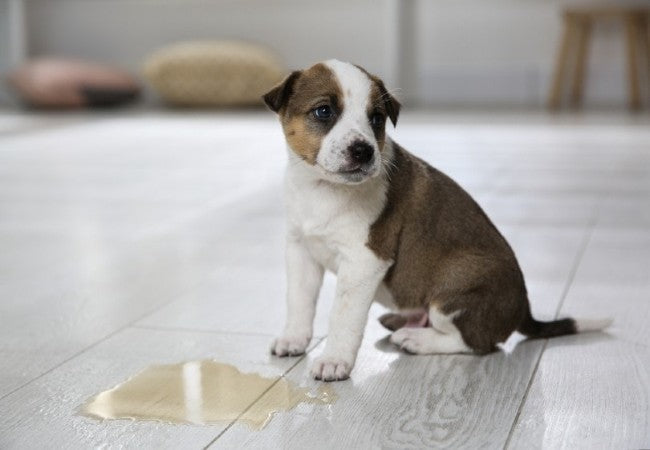How to Potty Train an Older Dog 2025: Vet Supported Routine & Success Tips 🐾

In this article
How to Potty Train an Older Dog 2025: Vet Supported Routine & Success Tips 🐾
By Dr. Duncan Houston BVSc
🔍 Why Adult Dogs Sometimes Need Re‑Training
Even well-loved older dogs can struggle with house training due to:
- 💭 Previous living situations like kennels or gravel yards
- 🧠 Cognitive decline, arthritis, or sensory loss in senior dogs
- 🏠 New home environments or disrupted routines
- ⚠️ Undiagnosed medical issues (UTIs, incontinence, kidney disease)
But yes—you *can* potty train an older dog. They learn best with patience, structure, and respect.
📅 Step 1: Build a Reliable Routine
Create a daily plan for meals, walks, potty breaks, and crate time. Consistency is key—seven days a week.
- Morning: Leash walk, breakfast, then another walk within 10–15 min.
- Afternoon: Frequent leash outings (every 2–4 hrs), especially after drinking or activity.
- Evening: Dinner, walk, light play, limiting water intake 1 hr before bed.
- Overnight: Crate time unless the dog needs a night break—older dogs may need one.
🔒 Step 2: Crate and Confinement Strategy
Crating helps prevent accidents and encourages bladder control:
- Use a properly sized crate—just enough to stand, lie, and turn.
- Leash indoors when unsupervised to monitor behavior.
- Gradually extend crate duration—reward calm with treats and time outside.
- Never punish—interrupt accidents gently and move the dog to potty spot.
🚶 Step 3: Leash‑Assisted Potty Breaks
Take your dog to a consistent toilet area on leash:
- Stay until they eliminate—don’t rush off.
- Use a cue phrase like “go potty” as they start.
- Praise and offer high-value treats immediately after—they learn fast.
🎉 Step 4: Reward to Reinforce Success
Adults learn best through positive reinforcement:
- Give a **special treat or toy** right outside after potty.
- Verbal praise and gentle pets reinforce behavior.
- Repeat the routine—consistency is more effective than punishment.
🏥 Step 5: Watch for Medical or Age-Related Issues
Some accidents aren’t behavioral—they’re medical:
- UTIs, incontinence, or kidney issues—especially in seniors.
- Arthritis or mobility issues—hard time getting outside quickly.
- Cognitive decline—forgetting where to go or responding late.
Consult your vet if accidents persist—medical treatment can resolve many issues.
🧸 Ask A Vet,
- 🩺 **Ask A Vet:** Rule out medical causes, create a personalized potty schedule, and support joint/cognitive care
📋 Sample Potty Training Plan
| Time | Action | Notes |
|---|---|---|
| 7 AM | Wake + leash walk | Start day with success |
| 7:30 AM | Breakfast → walk | Routine builds consistency |
| 10 AM | Short walk | Avoid accidents midday |
| 1 PM | Post-lunch walk | Hydration break |
| 5 PM | Dinner + walk | Evening potty |
| 8 PM | Quick walk | Prep for night |
| Bedtime | Crate or last outside | Limit water 1 hr before |
🎯 Final Thoughts
Potty training older dogs is a journey—not a limitation. With patience, clear routines, supportive reinforcement, and medical awareness, your companion can learn (or re-learn) healthy habits. And you’re never alone: professional guidance from Ask A Vet is here to help! 🐾💙
— Dr Duncan Houston, BVSc
Need personalized potty training support? Visit AskAVet.com or download the Ask A Vet app for expert help anytime.






